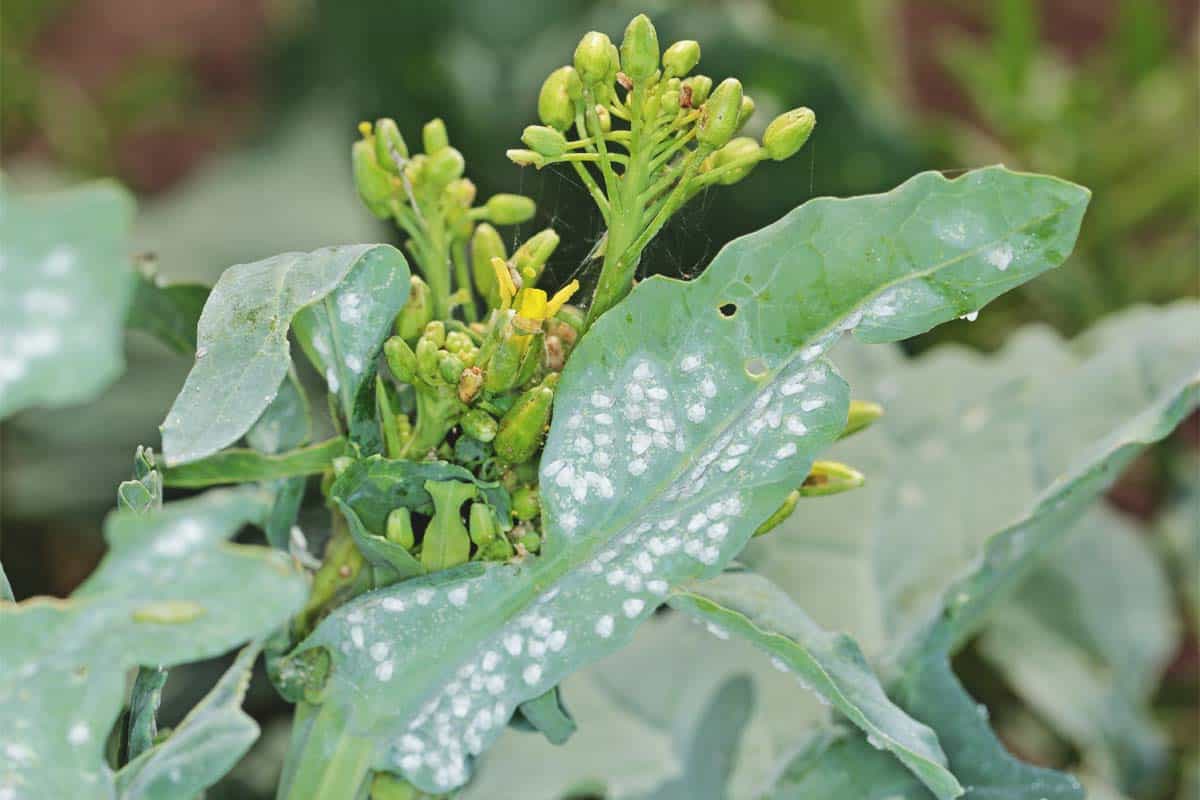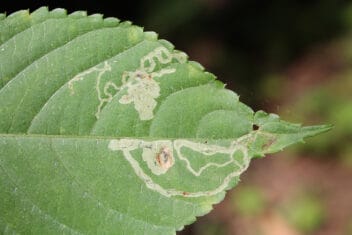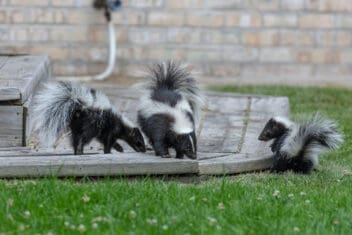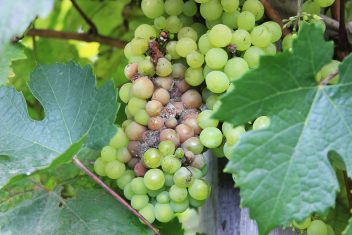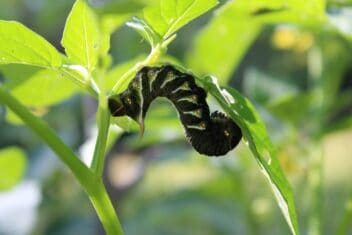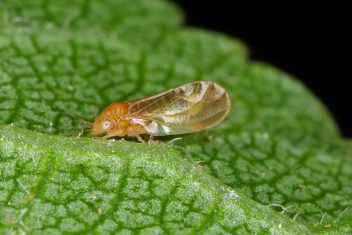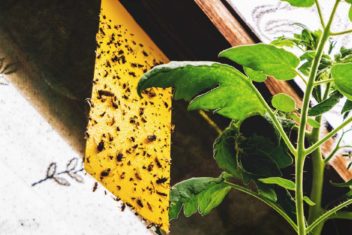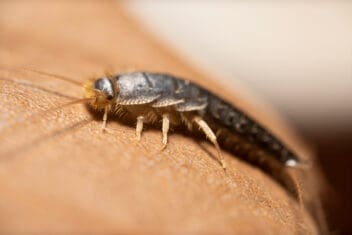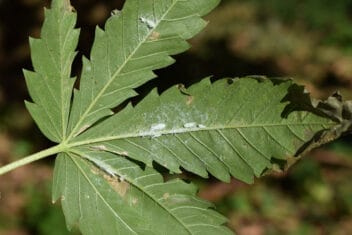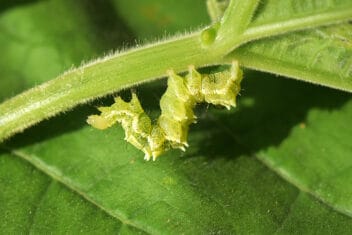These weak, pitiful flying insects don’t seem like a very formidable enemy, but whiteflies have the potential to kill entire crops in a short amount of time. By sucking the sap from healthy plants, they quickly turn a strong, productive plant into one that’s weak and dying.
Confession time: I’m a gardener with an insect phobia. Over the years, digging in the dirt and dealing with garden plants, I’ve become a bit more desensitized to insects. I’ve even come to love certain predatory and beneficial insects like ladybugs.
However, insect invaders like whiteflies still creep me out. They’re a big pain in the butt and can ruin your garden in no time flat. Don’t like em’ either? Here’s how to deal.
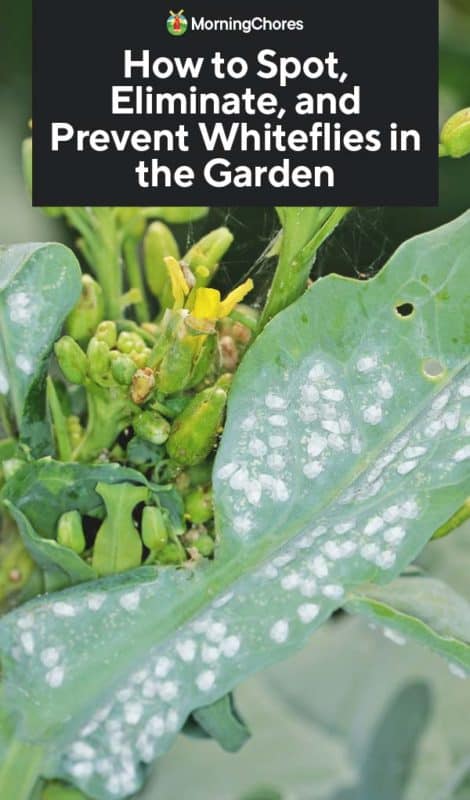
What are Whiteflies?
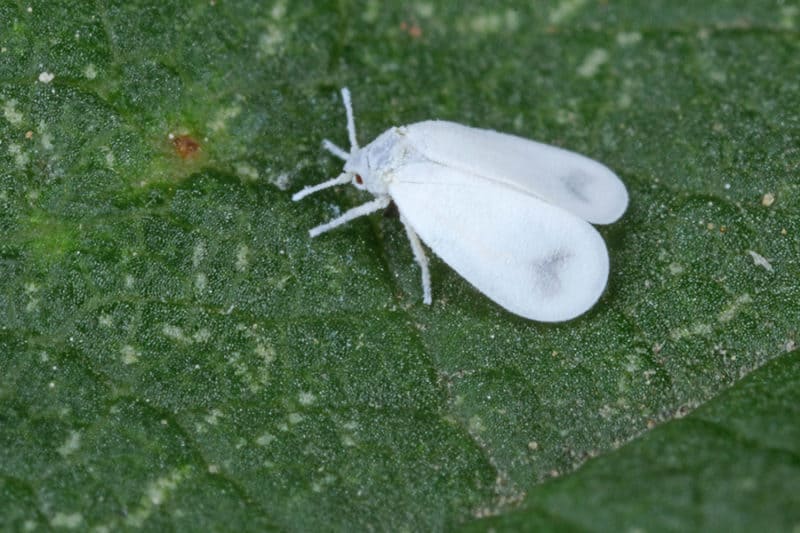
The name provides an excellent description of these tiny flying bugs. They’re white (usually), winged insects that look quite similar to aphids. They’re extremely common and are able to hide easily among plants because of their minuscule size.
They rarely grow to be more than a few tenths of an inch long and are skilled at hiding among garden debris.
There are a few different whitefly species, including the silver leaf whitefly. Other species vary slightly in color, size, and shape, some with a more yellowish hue.
Whiteflies feed on plants by sucking juices from the foliage. In heavily infested plants, this process inhibits photosynthesis.
By feeding off of plant foliage, whiteflies can also introduce diseases to your garden. They can spread fungal infections and viral diseases that can cause severe damage to your garden plants.
The Whitefly Lifecycle
Whiteflies overwinter (if it’s warm enough—they don’t tolerate freezing conditions) and are active in the summertime. They reproduce multiple times throughout the warm months.
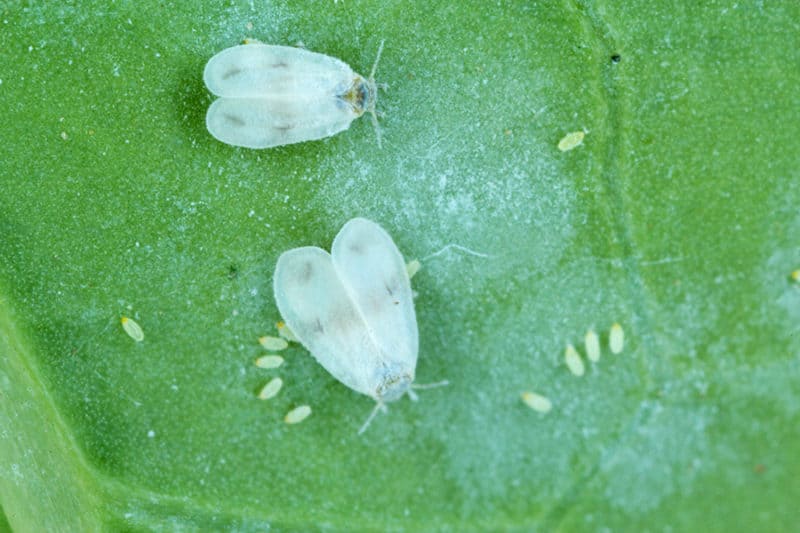
Whiteflies lay eggs on the underside of leaves. Newly hatched larvae are incredibly tiny and tough to spot, but they’re just as hungry as adult whiteflies.
Whiteflies can severely damage a plant even in their larval stage because of the sheer number of active pests. One female can lay up to 400 eggs!
Signs of Whitefly Activity
Because whiteflies are active during the day, spotting them isn’t that difficult, despite their small size.
They don’t only infest outdoor garden areas, they’re common greenhouse and houseplant pests, too. They’re attracted to many sun-loving plants, including heat-loving flowers, tomatoes, eggplants, sweet potatoes, and peppers.
If you think you might have a whitefly infestation on your hands there are a few signs to look out for including:
- A sticky residue left on plant foliage (also known as honeydew). Ants are often attracted to this sticky, sweet substance.
- Stunted, yellowing plants with a sickly appearance
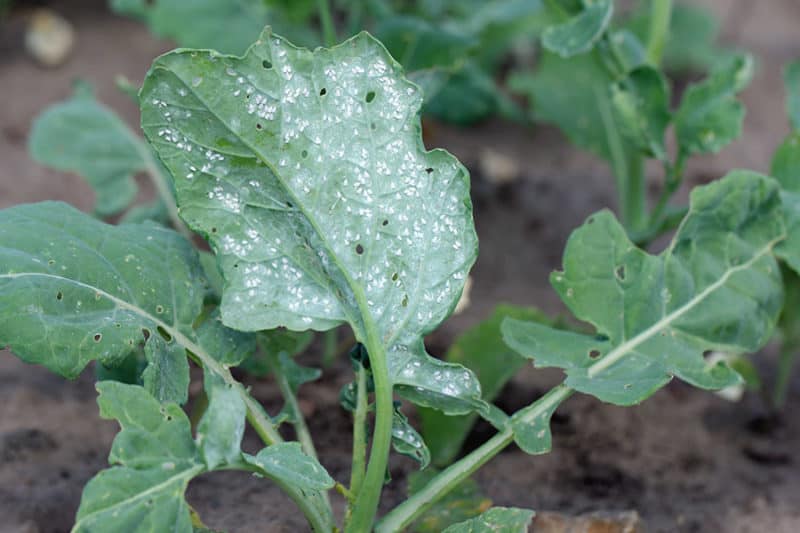
Whiteflies tend to congregate on the underside of leaves, which keeps them hidden, in most cases, from view. Check underneath plant leaves for the presence of white insects and their eggs.
How to Deal with an Infestation
You’ve spotted these tiny bugs and their eggs on your plants. YUCK! How should you attack the problem?
First, it’s important to be a diligent gardener. Spotting the problem early is vital. Inspect your plants frequently for signs of whitefly activity.
The easiest way to get rid of whiteflies is to physically dislodge them from foliage using a strong stream of water from your hose or with a handheld vacuum. This strategy works with multiple pests, including aphids.
You’re not done yet, though. Once you’ve gotten rid of the bugs with the hose, use a natural pest spray to cover the previously infested foliage.
Sprays containing dish soap help to deter whiteflies, though it’s not always an effective solution. A heavy infestation may not respond to these measures, and whiteflies may not be discouraged for long.
Neem oil is another option for getting rid of whiteflies. The substance suffocates the pests and kills them.
When applying any type of spray or topical oil treatment, do so in the morning or evening to prevent leaf burn and plant damage.
If there’s a heavy infestation, it’s best to remove affected plant matter as control of the bugs is unlikely to be successful.
As with many pests, preventative measures are much more effective and require a lot less effort in the long run.
How to Prevent Whiteflies
Prevention is the best medicine! Taking steps to cultivate a healthy garden ecosystem goes a long way towards protecting your precious plants.
Encourage the presence of predator insects that eagerly feed on tiny, vulnerable pests like whiteflies. Ladybugs, dragonflies, and spiders are known predators to these annoying bugs.
Use specialty mulches with a reflective quality to confuse whiteflies in search of host plants. The mulch deters the bugs but also help provide a warm environment for heat-loving plants like tomatoes and peppers.
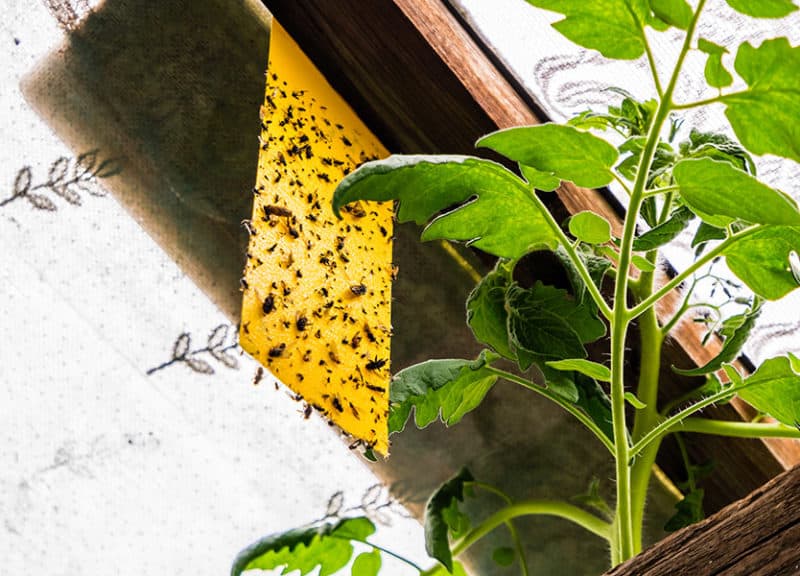
Use sticky traps to capture flying insects like whiteflies. The traps won’t put a dent in a heavy infestation, but they’ll let you know when it’s time to pay attention and start dealing with a problem head-on.
If you’re purchasing plants from a nursery, always check the undersides of leaves to check for whitefly activity. I made the mistake of not doing so last year when I bought a few plants at my local garden shop, and I ended up introducing whiteflies to my garden.
They quickly infested other nearby plants that I have started indoors. It was a frustrating experience but a worthy lesson. It’s advice I definitely knew, but I stupidly forgot in the moment.
What Not to Do
I get it. Pest infestations are extraordinarily annoying and disheartening. But don’t grab the store-bought chemical pesticides in an effort to banish the problem. Doing so isn’t likely to do much good, and you’ll probably end up killing friendly insects in the process.
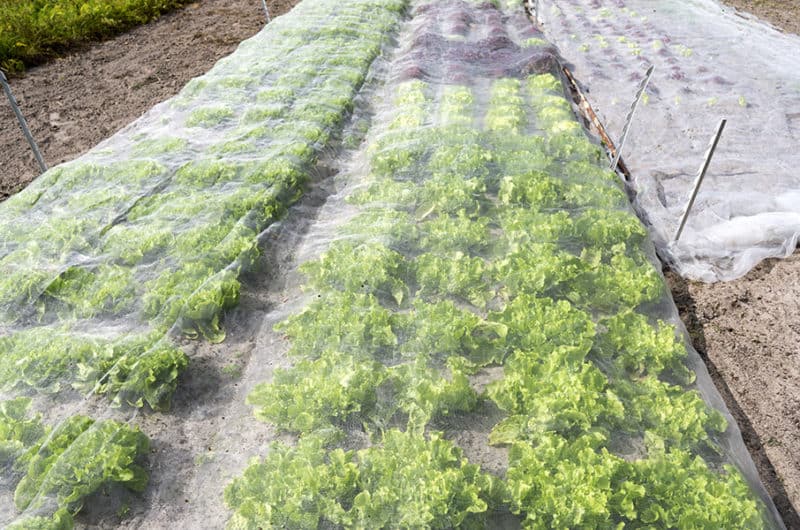
Row covers and other physical barriers aren’t of much use to prevent whiteflies from setting up shop in your garden because the bugs are so tiny. Plastic covers might help, but they’re not useful in the summer when conditions are already hot enough.
The Bottom Line
No one wants to deal with a whitefly infestation, but now that you have the tools to deal with it, you don’t have to let these little pests take over your garden. Let us know what methods work best for you in the comments below!
